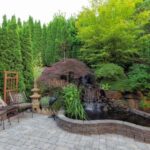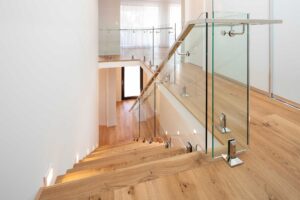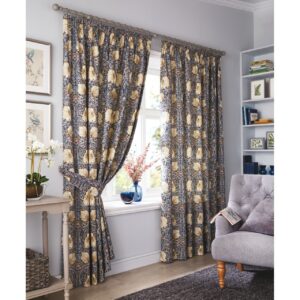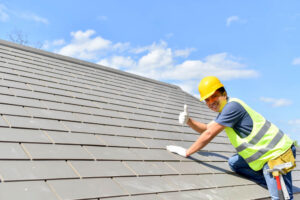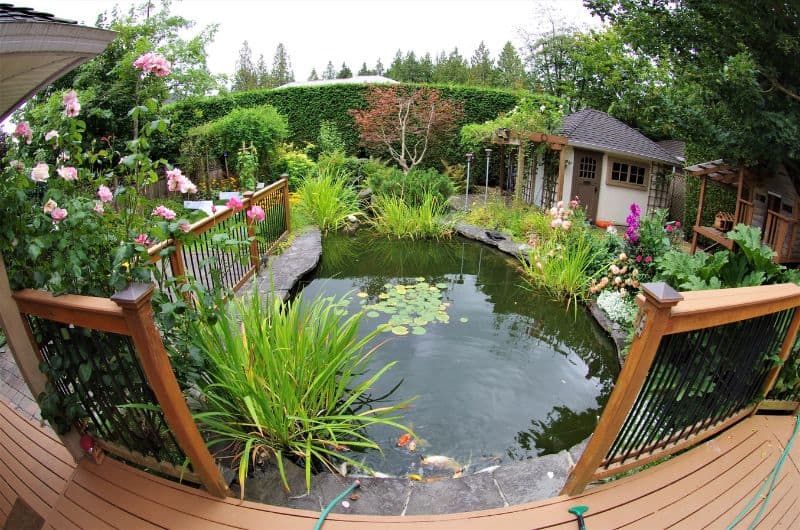
Garden Pond Building Tips
A garden pond adds lively, elegance, and beauty interest to a yard. Whether a fish pond, a receiving basin for a waterfall, or perhaps merely a placid body of water for reflection and deep breathing, a garden pond provides a focal point, that enhances nearly all yards. But to effectively develop a garden pond that looks natural, it helps you follow a couple of basic guidelines to make the building go smoother and for easier continued maintenance of the pond.
Level the Garden Pond Perimeter to Close Tolerances When digging the hole for the garden pond, remember that a garden pond’s water level is just as high as probably the lowest point of the pond perimeter. The entire perimeter of the garden pond needs to be as near to the same height as possible. This may be a point that seems obvious from afar, but when you’re digging the pond, it can often escape attention. Since an actual level is not possible, think in terms of tolerances and deviation. For instance, if your chosen pond depth is actually twenty-four inches, the perimeter’s deviation from that height should be as small as possible: just an inch or perhaps 2.
Click here to contact the best Waco pond building service.
Determine Whether the Pond Will Be Shallow or perhaps Deep The depth of the garden pond is actually a crucial decision that affects both costs and the eventual appearance of the pond. As the pond gets deeper, the bottom becomes less noticeable, and rock can’t be seen. Fish might tuck themselves away, hidden. Deeper ponds also require the use of additional expensive pond liners. Shallow ponds are better for displaying decorative rocks on the bottom, and fish are more prominent. But shallow ponds are likely to build up algae faster because the light can reach much more of the water with higher intensity.
Protect the Pond Bottom Against Burrowing Animals Burrowing pests such as moles and groundhogs can dig up holes in a lawn and garden. When you have a burrowing animal in your yard, it seems as if you are always filling in holes. But the issue goes well past the point of annoying when the burrowing animal exits under your garden pond, chewing away pond liner in the process. The answer is usually to lay down a metal mesh called hardware cloth as a base for your pond bottom before shoveling several inches of dirt over it. Then underlayment and liner go on top of the dirt layer. When your sides are actually dirt, not retaining wall block, you need to lay hardware cloth on the sides.
Reconcile Eventual Pond Size With the Pond Liner Size
A garden pond can be as large as the size of its underlying pond liner. So, you have several questions to answer before the shovel meets dirt. Quality pond liners made of ethylene propylene diene terpolymer (EPDM) are extremely costly, while PVC liners are actually expensive but less so than EPDM. In a project involving the use of low-cost or free materials like rock, concrete slabs, retaining wall blocks, and probably the lowest cost item of all, water, spending hundreds of dollars for a sheet of the liner can be a challenging prospect. In case your finances are tight, then the price of the pond liner will often dictate the pond’s dimensions. On the other hand, you may find it’s worthwhile to put a little cash into high visibility, curb appeal project such as this.
Early Shape Nuances Actually are Often Lost
When you actually create the pond’s form, you might find yourself adding special curves and inlets that you feel will give the garden pond a distinctive look. But these early delicate nuances often get softened and obliterated with each subsequent stage of the pond building process. Adding underlayment, liner, rocks at the bottom of the pond, and especially rocks along the pond’s bank all contribute to this softening process. Think in terms of basic shapes.
Add a Top Spillover Drain in the Design Unless you live in a parched, arid climate, the pond yours will inevitably overflow. However, even in dry areas, this could happen when you’re filling with the hose and let the time slip away. Instead of having the pond spill over and race toward your home foundation, create a predictable spillover point so that water can go to a secure spot.
Stay away from Tall, Vertical Garden Pond Walls.
The greater number of vertical and tall walls of the garden pond, the harder the task you will have when you apply stone to the pond. Loose, natural stones are actually difficult to stack vertically. Not merely does the rock are likely to fall, but a greater quantity of rocks or perhaps larger rocks are also necessary to cover this area. Small rocks are less expensive but difficult to stack. Large rocks cover vertical spaces easier but are actually difficult and costly to move. Make an effort to keep the garden pond banks at a 45-degree angle or even less, if possible.
Install a Permanent External Water Filter and Skimmer Unless you make provisions for a permanent water filter mounted in your pond’s wall, your best choices for filtration will be manual floating or skimming filtration devices. Hand skimming is actually a constant job, while floating filters take up a great deal of water surface and are actually unsightly. A permanent water filter mounted on the edge of the pond stays out of the way. Because it’s automatic, it is going to turn on at set intervals. While a permanent filter is costly and difficult to install at first, it makes for easier pond maintenance over the long term.
Terrace the Pond Bottom Sloped garden pond banks, if angled sharply enough, result in sliding rock at the pond’s bottom and sides. Instead, terrace the garden pond’s bottom and sides, a lot of love farming terraces or perhaps stair risers and treads. Keep each terrace riser no more than approximately six in high to stay away from stacking rocks too high. Create terraces by cutting them directly in the dirt with the shovel, so long as the dirt is actually packed tight enough to hold shape.
Plan in Advance for Covering the Pond Liner Every single square inch of pond liner must be covered up. Actually, the best, most expensive pond liner is actually governed by the sun’s punishing UV rays and will break down. The right way to protect against deterioration is by covering up all liners with something long-lasting, like rocks up the sides, river pebbles, or perhaps smooth gravel on the bottom. It is much better to think ahead about how you would like to cover up the liner. Doing so in hindsight often means overloading the pond liner. For instance, if you keep the pond terraces low enough, you can use smaller rocks. High terraces demand larger, more visually intrusive fill items.
Looking for Waco land clearing? Click here.











